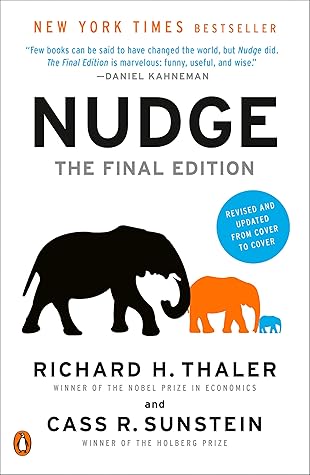More on this book
Community
Kindle Notes & Highlights
The idea is that when asked to judge how likely it is that A belongs to category B, people answer by asking themselves how similar A is to their image or stereotype of B (that is, how “representative” A is of B). Like the other two heuristics we have discussed, this one is used because it often works. Stereotypes are sometimes right!
Even in less exotic locales, it can be smart to let someone else choose for you. Many of the best restaurants in the world give their diners very few choices. You might be asked whether you want the two-hour or three-hour treatment, and whether you have any dietary restrictions. The benefit of having so little choice is that the chef is authorized to serve you things you would never have thought to order.
With respect to health, romance, and money, it is not at all hard to exploit people’s lack of information. If one of those things is at stake, companies have a strong incentive to exploit behavioral biases, including availability, unrealistic optimism, and anchoring. And they certainly try to create informational cascades. Sometimes they succeed.
Those doors are bad architecture because they violate a simple psychological principle with a fancy name: stimulus response compatibility. The idea is that you want the signal you receive (the stimulus) to be consistent with the desired action. When there are inconsistencies, performance suffers and people blunder.
Instead, it is possible to incorporate human factors into design, as Don Norman’s wonderful book, The Design of Everyday Things, illustrates. In fact, the idea of the book is illustrated by its brilliant cover, which has the image of a teapot with its handle and the spout on the same side. Pause and think about it.
Defaults are ubiquitous and powerful. They are also unavoidable in the sense that for any node of a choice architecture system, there must be an associated rule that determines what happens to the decision maker if she does nothing. Usually the answer is that if I do nothing, nothing changes; whatever is happening continues to happen. But not always.
“forcing function,” meaning that in order to get what you want, you have to do something else first.
A good system of choice architecture helps people to improve their ability to map choices onto outcomes and hence to select options that will make them better
The old expression that less is more rings true here. Good choice architects often winnow the choice set down to a manageable size.
A self-nudge can be called a “snudge,” and for most of us, life can be improved via well-chosen snudges.
When lotteries are used to motivate people, it is important to get the details right. Participants are likely to find a lottery more enticing if they find out whether they would have won. The Dutch government uses this principle very effectively. One of its state lotteries is based on postal codes. If your postal code is announced as the winner, you know that you would have won had you only bought a ticket. The idea is to play on people’s feelings of regret.
If you want to encourage some behavior, figure out why people aren’t doing it already, and eliminate the barriers that are standing in their way.
if you want to discourage some behavior, make it harder by creating barriers.
Not surprisingly, only a small proportion of rebates are successfully redeemed, roughly 10 to 40 percent.
Some of this information is collected using what are called cookies. These are files that remain on your browser and that record data about your use on that browser, such as browsing activity, purchases and preferences, geographical location, and the like. Usually, this information is used for targeted marketing.


